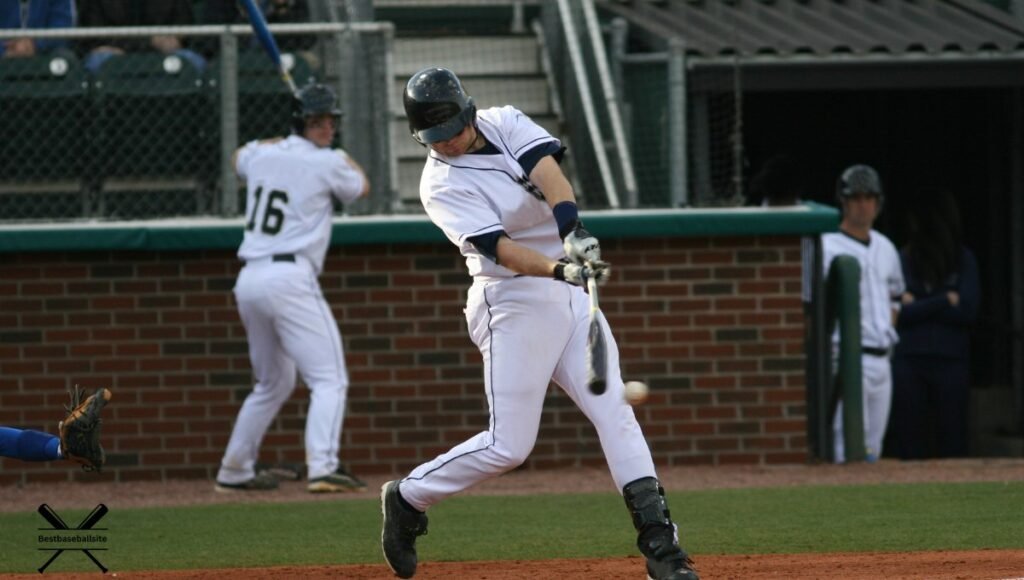A baseball scrimmage is a practice game between teammates or against another team. It simulates real game conditions without official stakes.
Baseball scrimmages are essential for player development and team cohesion. They offer a platform for athletes to hone their skills in a competitive yet controlled environment. Coaches use these games to evaluate player performance and make strategic adjustments. Scrimmages also help players become familiar with different game scenarios and improve their decision-making.
This practice format is invaluable for identifying strengths and weaknesses. It fosters team chemistry and prepares players for official matches. Overall, baseball scrimmages are a vital component of effective training programs, contributing significantly to a team’s success on the field.
Introduction To Baseball Scrimmage
A baseball scrimmage is a practice game. It helps teams prepare for real matches. Players get a chance to improve their skills. Coaches can see what needs work. Scrimmage is important for team development.
Meaning And Purpose
A baseball scrimmage is a practice match between two teams. The main goal is to practice and learn. Scrimmages are less formal than actual games. They allow players to try new strategies. The focus is on improvement, not winning.
| Feature | Scrimmage | Real Game |
|---|---|---|
| Formality | Informal | Formal |
| Objective | Practice | Win |
| Flexibility | High | Low |
Historical Background
Scrimmage has been part of sports for a long time. In baseball, they help players get ready for the season. Early teams used scrimmages to train new players. They also tested different plays and strategies.
In the past, baseball teams often had limited resources. They used scrimmages to maximize practice time. This tradition continues today. Many teams hold regular scrimmages before important games.
Key Components
A baseball scrimmage is a practice game. It helps players improve their skills. Understanding the key components is essential. Here, we will explore the players and positions, and the equipment needed.
Players And Positions
In a baseball scrimmage, each team has nine players. Each player has a specific position:
- Pitcher: Throws the ball to the batter
- Catcher: Catches the pitches from the pitcher
- First Baseman: Covers first base
- Second Baseman: Covers second base
- Shortstop: Positioned between second and third base
- Third Baseman: Covers third base
- Left Fielder: Plays in the outfield, left side
- Center Fielder: Plays in the outfield, center
- Right Fielder: Plays in the outfield, right side
Each position is vital for defense. The team works together to prevent the other team from scoring.
Equipment Needed
Proper equipment is crucial for a baseball scrimmage. Here is what you need:
| Equipment | Purpose |
|---|---|
| Baseball | Used for pitching, hitting, and fielding |
| Bat | Used by the batter to hit the ball |
| Glove | Worn by fielders to catch the ball |
| Helmet | Worn by batters for safety |
| Catcher’s Gear | Protects the catcher from injuries |
Each player must have the right gear. Safety and performance depend on proper equipment.
Rules And Regulations
Understanding the rules and regulations of a baseball scrimmage is crucial. This ensures fair play and enjoyment for everyone involved.
Game Duration
A baseball scrimmage typically lasts a set number of innings. Each inning is divided into two halves: the top and the bottom. The top half sees the away team batting, while the bottom half allows the home team to bat. A standard scrimmage usually consists of 6 or 7 innings. However, the duration can be flexible based on the agreement between the teams.
Scoring System
In a baseball scrimmage, the scoring system remains similar to a regular game. Points are scored when a player successfully reaches the home plate after touching all three bases. The team with the most runs at the end of the innings wins the scrimmage. Here is a simple breakdown of the scoring system:
| Action | Points |
|---|---|
| Reaching Home Plate | 1 Run |
Keeping track of runs is essential for both teams. This ensures clarity and minimizes disputes.
By following these basic rules, participants can enjoy a fair and exciting baseball scrimmage. Remember, the goal is to have fun while honing your skills.
Preparation And Strategy
Preparing for a baseball scrimmage involves more than just showing up. Teams need to focus on both physical and tactical aspects. This ensures they are ready to perform at their best. Let’s dive into some key areas of preparation and strategy.
Training Drills
Training drills are crucial for a team’s success. They help players refine their skills. Here are some common drills:
- Batting Practice: Players take turns hitting balls to improve their swing.
- Fielding Drills: Practice catching ground balls and fly balls.
- Pitching Practice: Pitchers work on their accuracy and speed.
- Base Running Drills: Players practice running between bases quickly.
These drills ensure players are ready for various game situations.
Tactical Approaches
Tactical approaches are about using the right strategies. Coaches and players must be on the same page. Here are some key tactics:
| Situation | Tactic |
|---|---|
| Offensive | Hit-and-run play: The Runner starts running as the batter hits. |
| Defensive | Shift: Players move to where the batter hits often. |
| Pitching | Change-up: A slower pitch to confuse the batter. |
Understanding these tactics can make a big difference in a game. Players need to practice these often to react quickly during a scrimmage.
Benefits Of Scrimmages
A baseball scrimmage is a practice game. It helps players improve their skills. Scrimmage are also great for building team spirit. Let’s explore the benefits of scrimmages.
Skill Development
Scrimmages offer a real game environment. This helps players practice their skills. They can work on hitting, pitching, and fielding. Players get to face live opponents. This makes them better prepared for actual games.
Coaches can observe players closely during scrimmages. They can identify areas for improvement. They can also give instant feedback. This helps players correct mistakes quickly.
| Skill | Benefit |
|---|---|
| Hitting | Improves timing and accuracy |
| Pitching | Enhances control and speed |
| Fielding | Boosts agility and coordination |
Team Cohesion
Scrimmages help build team cohesion. Players learn to work together. They understand each other’s strengths and weaknesses. This makes the team stronger.
During scrimmages, players communicate more. They call out plays and support each other. This improves their teamwork. A well-coordinated team performs better in real games.
Here are some ways scrimmages build team cohesion:
- Encourages communication
- Builds trust among players
- Fosters a sense of unity
Common Mistakes
Baseball scrimmages are a great way to practice. They help players improve their skills. But, there are common mistakes that teams make. These mistakes can hurt their performance. Let’s look at some of them.
Overtraining
Overtraining is a big problem in baseball scrimmages. Players often think more practice means better results. This is not always true. Overtraining can lead to injuries. It can also cause fatigue.
It’s important to balance practice and rest. Here are some tips:
- Listen to your body: Rest if you feel pain or extreme fatigue.
- Follow a schedule: Plan rest days to avoid overtraining.
- Stay hydrated: Drink plenty of water during practice.
Ignoring Fundamentals
Ignoring fundamentals is another common mistake. Players often skip basic drills. They focus on advanced techniques instead. This can hurt their performance.
Fundamentals are the building blocks of baseball. Without them, players struggle. Here are some key fundamentals to focus on:
- Proper batting stance: Ensure your feet are shoulder-width apart.
- Correct throwing mechanics: Use your whole body to throw.
- Fielding basics: Keep your eye on the ball at all times.
Ignoring these basics can lead to errors. Always remember to practice fundamentals regularly.
Organizing A Scrimmage In Baseball
Organizing a baseball scrimmage can be an exciting task. It brings players together for practice. It helps them improve their skills. Below, we will guide you through the key steps.
Setting Up The Field
Setting up the field is the first step. You need a proper baseball field. Ensure the bases are in place. The pitcher’s mound should be ready. The outfield must be clear of obstacles.
Check the field dimensions. Make sure they are accurate. You can use a measuring tape for precision. Mark the foul lines clearly. This helps players see the boundaries.
Prepare the dugouts. They should have benches for players. Provide water and snacks. Keep first aid supplies handy. Safety is important during a scrimmage.
Scheduling And Coordination
Scheduling a scrimmage requires coordination. Decide on a date and time. Inform all players and coaches. Use a shared calendar to avoid conflicts.
Prepare a roster of participants. Ensure everyone knows their positions. You can use a table for clarity:
| Player Name | Position |
|---|---|
| John Doe | Pitcher |
| Jane Smith | First Base |
Communicate any changes promptly. Use email or messaging apps. Keep everyone informed. This helps the scrimmage run smoothly.
Have a backup plan. Weather can change suddenly. Find an indoor facility if possible. Ensure everyone knows the backup plan.
Scrimmage Vs. Regular Game
Understanding the difference between a scrimmage and a regular game is crucial for baseball enthusiasts. While both involve playing baseball, they serve different purposes and have distinct characteristics.
Key Differences
There are several key differences between a scrimmage and a regular game. These differences are outlined in the table below:
| Aspect | Scrimmage | Regular Game |
|---|---|---|
| Purpose | Practice and skill improvement | Competition and winning |
| Scorekeeping | Informal or none | Formal and official |
| Substitutions | Frequent and flexible | Limited and regulated |
| Audience | Coaches and players | Fans and spectators |
Advantages And Disadvantages
Both scrimmages and regular games have their advantages and disadvantages.
- Scrimmage Advantages:
- Allows for experimentation with strategies
- Helps players improve their skills
- Less pressure on players
- Scrimmage Disadvantages:
- May lack a competitive edge
- Less motivation to perform well
- Regular Game Advantages:
- Promotes team spirit
- Encourages high performance
- Provides real competitive experience
- Regular Game Disadvantages:
- More pressure on players
- Less room for experimentation
Frequently Asked Questions
What Is A Scrimmage In Baseball?
A scrimmage in baseball is a practice game. It allows teams to simulate real-game scenarios without official scoring.
What Is The Difference Between A Scrimmage And A Game?
A scrimmage is a practice match with relaxed rules and no official score. A game is a formal competition with official rules and scoring.
What Is The Point Of A Scrimmage Game?
A scrimmage game helps teams practice strategies, improve skills, and simulate real-game situations without official competition pressures.
Conclusion
A baseball scrimmage offers players valuable practice in a game-like setting. It helps improve skills and team dynamics. Understanding scrimmages can enhance your appreciation of the sport. Whether you’re a player or a fan, these practice games are essential. Enjoy the excitement and benefits of a baseball scrimmage today.






